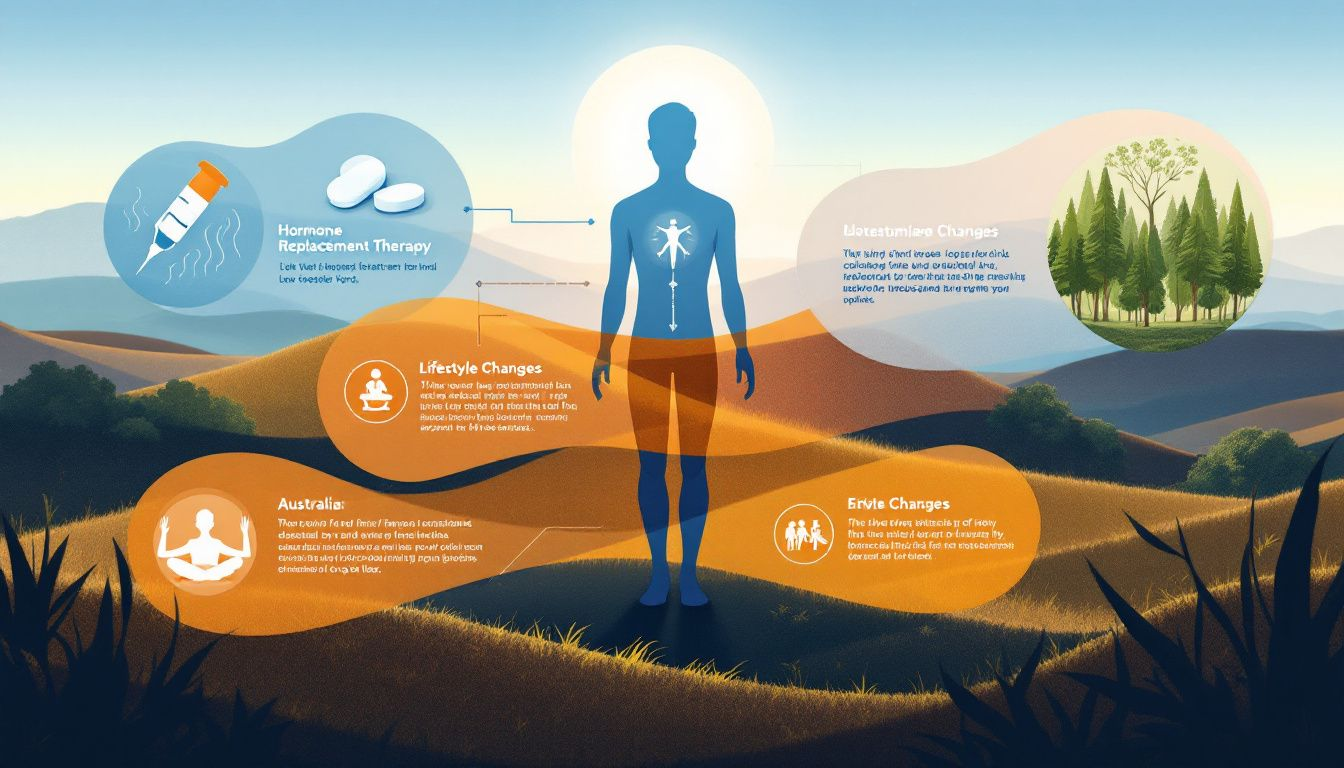
If you’re concerned about testosterone levels Australia, understanding what’s normal is key. For Australian men, normal testosterone levels range between 9.7 to 34.3 nmol/L. This article outlines these levels, discusses their health impacts, and provides guidance on what to do if your levels are low.

Normal serum testosterone levels for healthy Australian men range from 9.7 to 34.3 nmol/L, with 12 nmol/L or above considered eugonadal. This reference range aids doctors in assessing whether testosterone levels are normal or indicate a deficiency.
Free testosterone, the biologically active form, makes up about 1-3% of total plasma testosterone and is crucial for functions like libido and muscle strength. Testosterone levels peak in the morning, so the timing of blood tests can affect results.
Men experience a natural decline in testosterone levels by about 1% per year, while sex hormone binding globulin levels rise by 1-2% annually, affecting free testosterone availability. Recognizing these changes helps distinguish normal aging from conditions like male hypogonadism.
Aging significantly contributes to the gradual decline in testosterone levels. Genetic disorders like Klinefelter syndrome and pituitary gland damage from injury or infection can also lower testosterone production.
Testicular injuries or infections directly cause low testosterone levels. Chronic conditions such as obesity exacerbate this decline by disrupting the endocrine system.
Chronic stress elevates cortisol levels, hindering testosterone production and affecting the adrenal glands. Low vitamin D levels are also linked to decreased testosterone, indicating the potential benefits of adequate sunlight exposure or supplementation. Recognizing these causes aids in early identification and intervention.

Increased sensitivity and swelling of breast tissue in men are hallmark symptoms of low testosterone. Other physical changes include increased body fat and reduced muscle strength, significantly affecting physical appearance and self-esteem.
Low testosterone also impacts mood, sleep, and energy levels, often developing gradually and complicating identification. Early recognition of these subtle changes can prevent misdiagnosis and ensure timely treatment.
In women, low testosterone can lead to decreased sexual desire. Recognizing symptoms like loss of libido is crucial for seeking appropriate medical advice and treatment.
Diagnosing low testosterone involves identifying persistent symptoms and consistently low levels. Total testosterone is the primary diagnostic measure, with 12 nmol/L or above considered normal. Blood samples taken around 8 am capture peak levels.
Fasting before a blood test is crucial since food intake can lower testosterone levels by up to 25%. Multiple tests are needed to confirm hypogonadism due to natural testosterone variability. Measuring both total and free testosterone ensures an accurate diagnosis.
Once low testosterone is confirmed, testing for luteinizing hormone and follicle-stimulating hormone helps differentiate between primary and secondary hypogonadism. These tests clarify underlying causes, aiding targeted treatment plans.

Testosterone replacement therapy in Australia offers options like injections, patches, or testosterone gel, approved by the Therapeutic Goods Administration. Men with hypogonadism are eligible for this therapy. Injections are often preferred for their stability and effectiveness.
Specialized TRT clinics provide comprehensive care, addressing broader health issues alongside hormone therapy. Costs for testosterone replacement therapy range from $100 to $200 monthly, depending on the clinic and dosage. Addressing underlying causes is essential for overall health and hormonal balance.
Potential risks of testosterone therapy include increased risks of blood clots and heart disease. Side effects can include sleep apnea and skin reactions like acne. Despite these risks, testosterone therapy can significantly improve the quality of life for those with low testosterone.

Some reviews suggest testosterone therapy may not clearly improve well-being or mood but can lead to health issues like polycythemia and increased prostate cancer risk. Older and obese men face higher risks due to comorbidities like prostate disease and obstructive sleep apnea.
Regular monitoring, including blood tests and bone mineral density scans, is crucial for men undergoing testosterone treatment. A standardized monitoring plan helps manage risks and ensure therapy efficacy. Testosterone therapy may not benefit aging men without medical conditions affecting testosterone levels.
Despite its benefits, testosterone therapy carries risks like overdiagnosis of clinically insignificant prostate cancer. Understanding these risks and benefits helps individuals make informed treatment decisions.

A balanced diet rich in proteins, healthy fats, and carbohydrates supports optimal testosterone levels. Resistance training, such as weightlifting, can temporarily boost testosterone. These lifestyle changes benefit both testosterone levels and overall health.
Healthy testosterone levels positively impact body composition, muscle strength, and energy. Quality sleep is crucial, as insufficient sleep can significantly lower testosterone levels. Minimizing exposure to estrogen-like substances, such as BPA, also supports healthy testosterone levels.
Excessive alcohol consumption negatively impacts testosterone production and testicular health. Adopting these lifestyle changes helps manage testosterone levels naturally and improves overall health.
Several resources are available for those dealing with testosterone-related issues. Individuals can consult their doctor or call healthdirect at 1800 022 222 for advice.
Organizations such as Healthy Male and the Australian X and Y Spectrum Support provide networks and resources for those affected by conditions like Klinefelter syndrome.
Understanding and managing testosterone levels is crucial for maintaining overall health and well-being. Recognizing the causes and symptoms of low testosterone, getting an accurate diagnosis, and exploring treatment options can significantly improve quality of life. Whether through medical interventions or lifestyle changes, taking proactive steps to manage testosterone levels is essential. Remember, support and resources are available to help you navigate this journey.
Yes, a testosterone level of 10.7 nmol/L is considered low and falls within the equivocal range, suggesting that further testing is recommended. It’s a good idea to consult with a healthcare professional to explore any underlying causes.
A dangerously low testosterone level in Australia is typically considered to be below 8 nmol/L. Levels below 7.4 nmol/L significantly increase health risks.
Normal testosterone levels in Australian men typically range from 9.7 to 34.3 nmol/L. It’s important to keep these numbers in mind when considering overall health.
Low testosterone in men can be caused by factors like aging, genetic disorders, injuries, chronic health conditions, and lifestyle elements such as chronic stress and low vitamin D levels. It’s important to address these issues for overall well-being.
Low testosterone can lead to increased body fat, reduced muscle strength, mood swings, sleep troubles, and lower energy levels. If you’re experiencing these symptoms, it might be worth talking to a healthcare professional.
Copyright 2025 Tongkat Ali Australia, all rights reserved